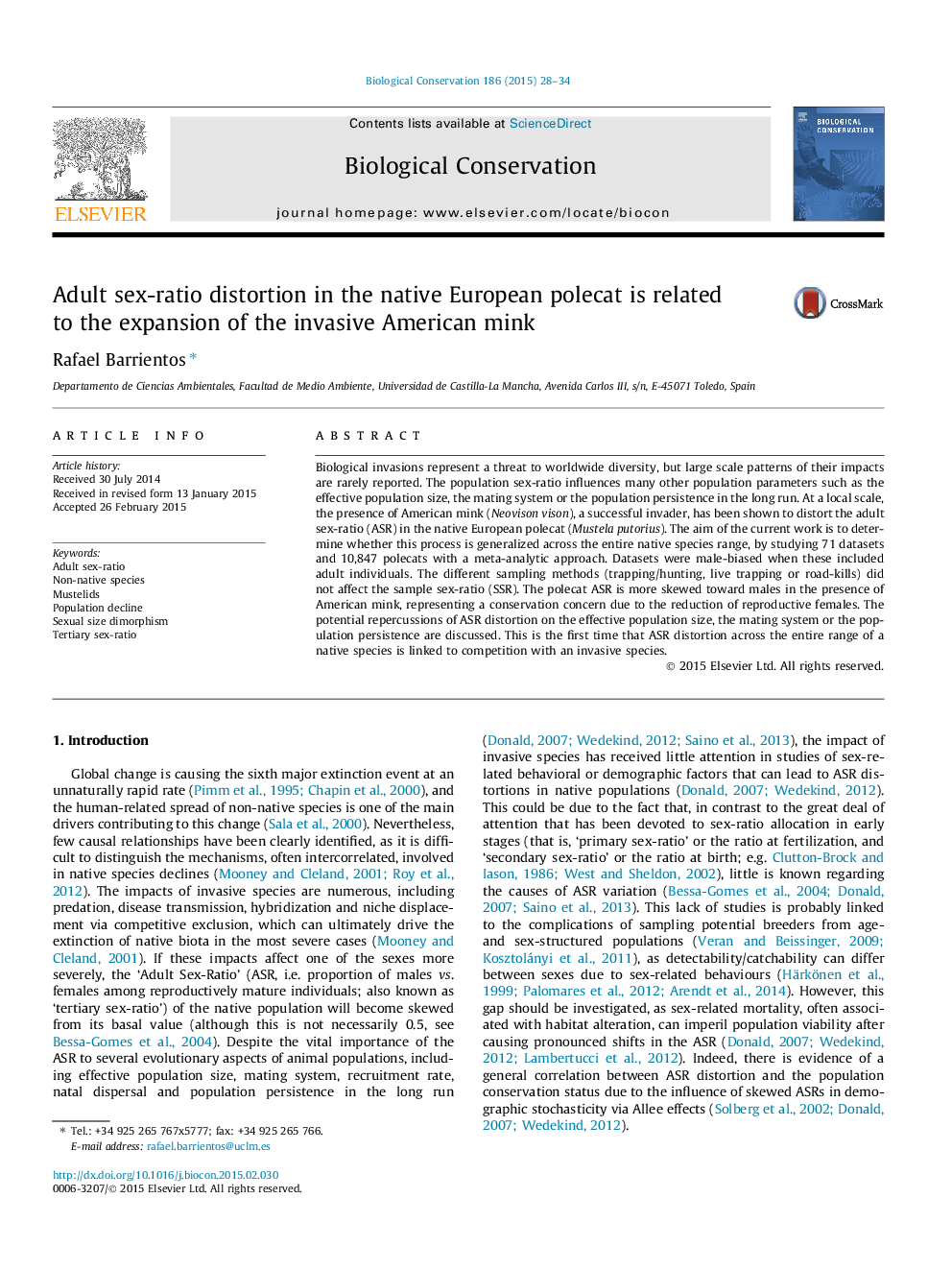| Article ID | Journal | Published Year | Pages | File Type |
|---|---|---|---|---|
| 6299662 | Biological Conservation | 2015 | 7 Pages |
Abstract
Biological invasions represent a threat to worldwide diversity, but large scale patterns of their impacts are rarely reported. The population sex-ratio influences many other population parameters such as the effective population size, the mating system or the population persistence in the long run. At a local scale, the presence of American mink (Neovison vison), a successful invader, has been shown to distort the adult sex-ratio (ASR) in the native European polecat (Mustela putorius). The aim of the current work is to determine whether this process is generalized across the entire native species range, by studying 71 datasets and 10,847 polecats with a meta-analytic approach. Datasets were male-biased when these included adult individuals. The different sampling methods (trapping/hunting, live trapping or road-kills) did not affect the sample sex-ratio (SSR). The polecat ASR is more skewed toward males in the presence of American mink, representing a conservation concern due to the reduction of reproductive females. The potential repercussions of ASR distortion on the effective population size, the mating system or the population persistence are discussed. This is the first time that ASR distortion across the entire range of a native species is linked to competition with an invasive species.
Related Topics
Life Sciences
Agricultural and Biological Sciences
Ecology, Evolution, Behavior and Systematics
Authors
Rafael Barrientos,
